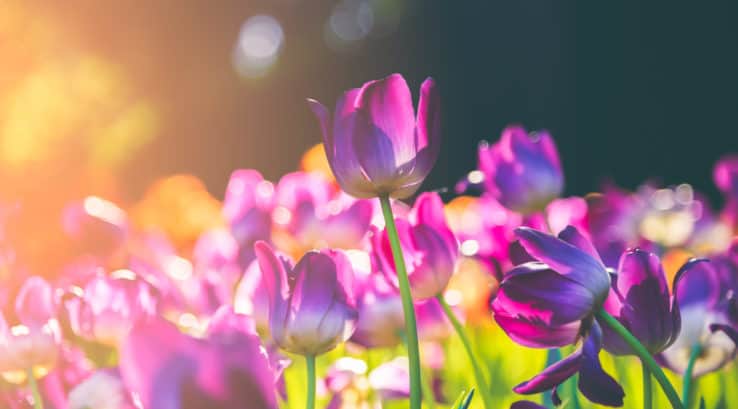Spring Flowers to Plant to Ensure Optimum Bloom
Planning out your spring flower garden isn’t something you want to put off until spring arrives. It’s best to have a strategy in place well before the final frost, so you can hit the ground running and enjoy a spring season full of colorful blooms.
Spring Flowers to Plant to Ensure Optimum Bloom
In this guide, you’ll discover the ten best flowers to plant in spring (and when you should be planting them) to ensure your garden is full of color all season long.
#1: Tulips (Tulipa)
Tulips offer bold and vibrant colors and they’re often among the very first flowers to bloom in the spring. For best results, plant the bulbs in the fall six weeks before frost, but in truth, you can plant them any time in winter, even as late as February, and still achieve a spring bloom. Plant the bulbs in sunny areas with well-drained soil, and cluster the bulbs in groups to make a more impactful garden.
#2: Daffodils (Narcissus)
The intense yellow color of the daffodil is a welcome addition to any spring garden. Like tulips, daffodils are planted in bulb form in the fall. Also, like tulips, daffodils are early risers and can sometimes even be coaxed up out of the ground in winter if the weather stays warm enough for a couple of days in a row.
#3: Crocus
Crocus is a low-lying plant with lovely lavender-colored blooms. For spring bloom, it’s best to plant crocus in the fall, especially for those who live in zones 3 to 8. Those who live in warmer climates can store the bulbs in the refrigerator until late winter and then plant them as annuals.
#4: Forsythia
Forsythia is more of a shrub than a flower, but it does display beautiful golden blooms early in the year, making it an excellent addition to any spring garden. Best of all, you can plant forsythia in early spring and still enjoy its golden blooms (if the plant was purchased locally).
#5: Star Magnolia (Magnolia Stellata)
The star magnolia gets its name for its white star-shaped flowers, but the plant is actually a tree. It’s best to plant this tree in full sun in acidic soil and in an area where the buds can be protected against opening prematurely and thus being killed by a late frost.
#6: Hyacinths (Hyacinthus)
Hyacinths feature tubular flowers that emit a wonderful fragrance. For this plant to succeed, it needs fertile, well-drained soil in either sun or light shade and the bulbs should be planted in the fall at a minimum of four inches deep.
#7: Camellia
Camellia is another flowering shrub with elegant pink or white carnation-like flowers. This plant needs to be planted in acidic, well-drained soil and in a sheltered spot for it to grow well. It can be planted in the ground any time from late fall to early spring.
#8: Rhododendron
Abundant in gardens on the east coast, the rhododendron is an evergreen shrub that produces rich purple or pink flowers in the spring. For the best results, the shrub should be planted in early spring after the last frost of the season has passed. It also requires well-drained soil because waterlogged roots are the most common cause of failure in this plant.
#9: Flowering Currant (Ribes Sanguineum)
The flowering currant plant is known for its deep red flowers and blue fruit. It also gives off a very strong aroma, which homeowners tend to either love or hate. It should be planted any time from October to March and only in full-sun areas.
#10: Primrose (Primula)
Primrose is available in a variety of different colors and they’re often found growing in the wild in grassy meadows and forest floors. They thrive best in cooler climates and in humus-rich soil, which is why they do so well in woodland spaces. To plant primroses, you want to divide the plants in late spring, after they flower, or if growing from seed, sow the seed in late winter.


